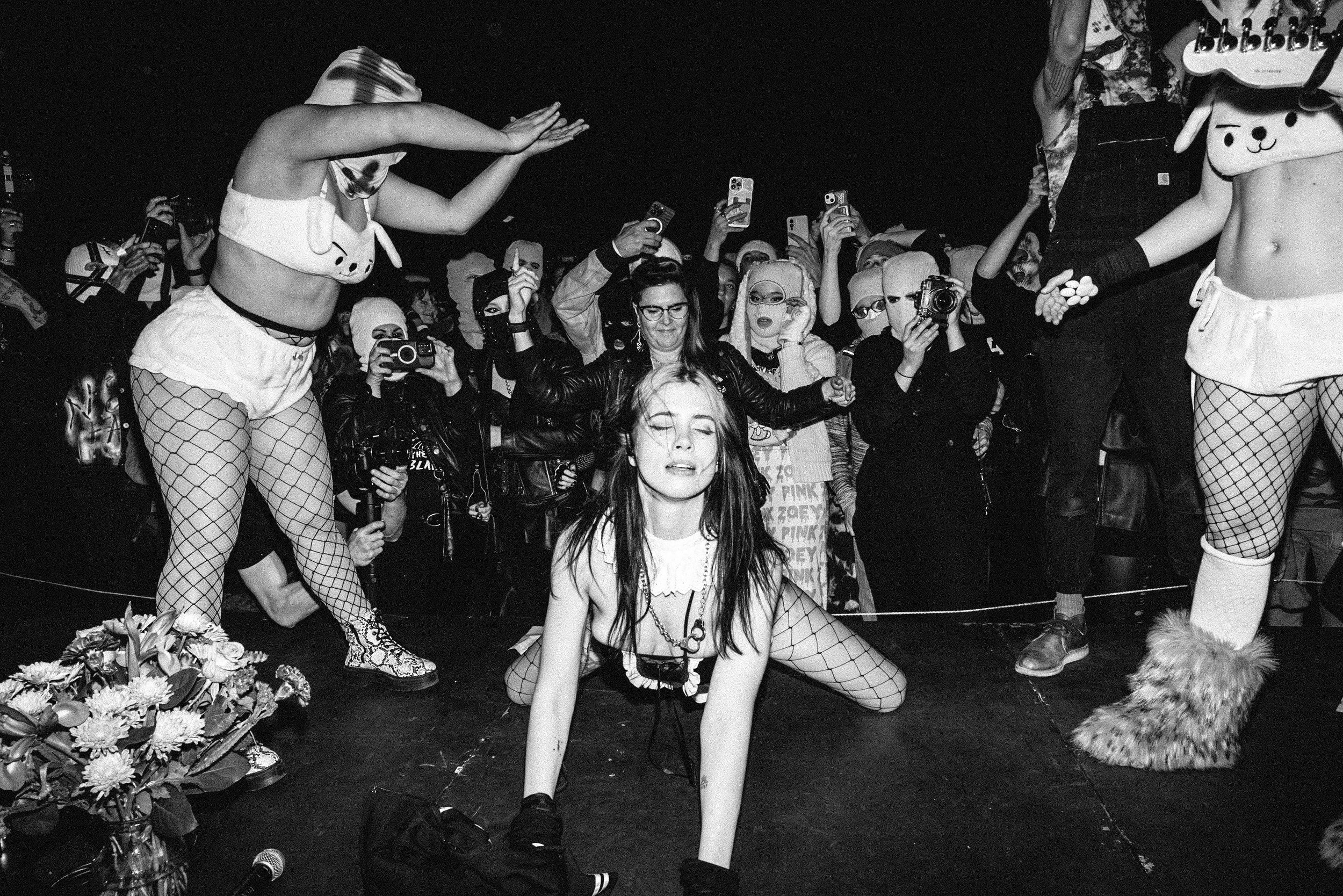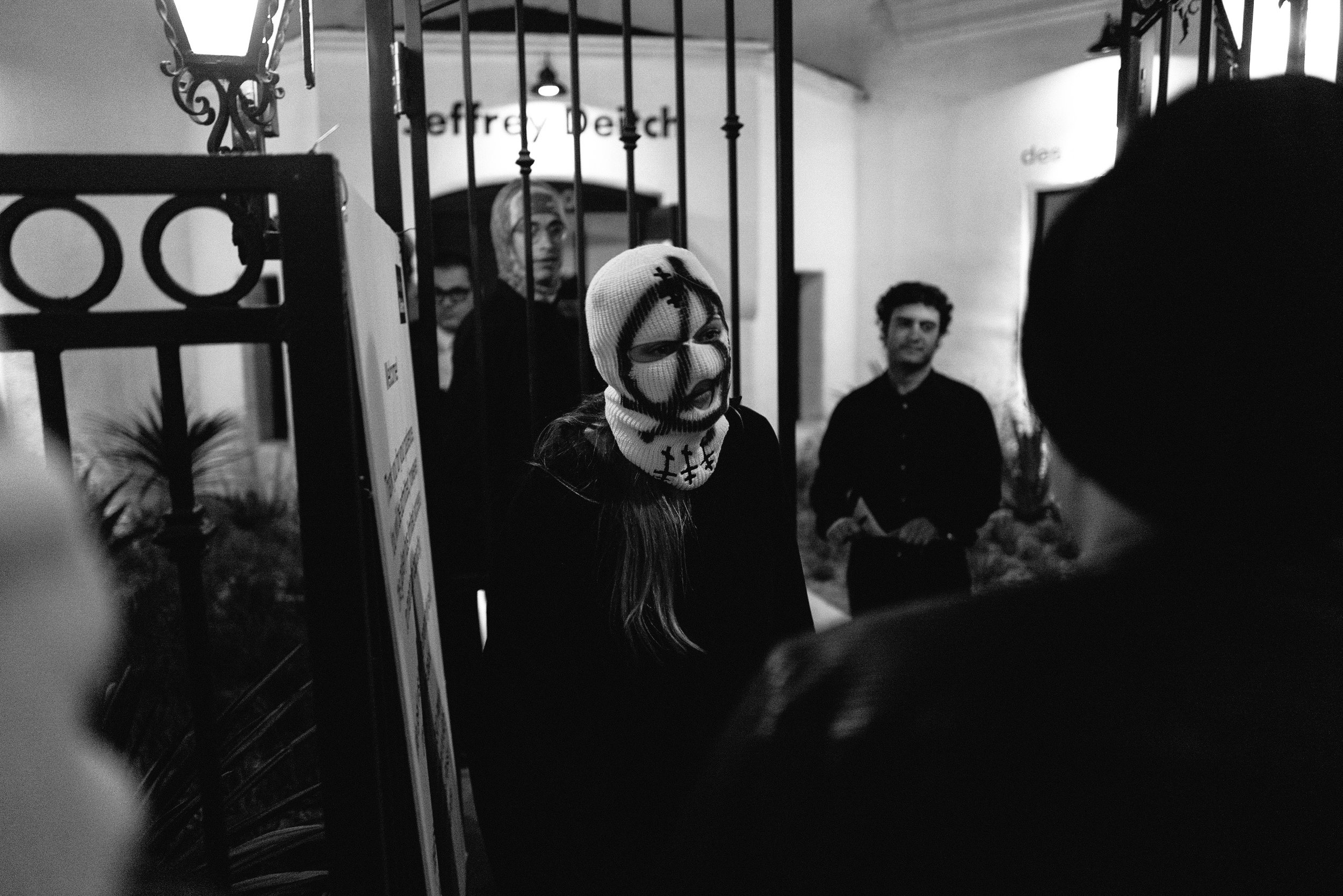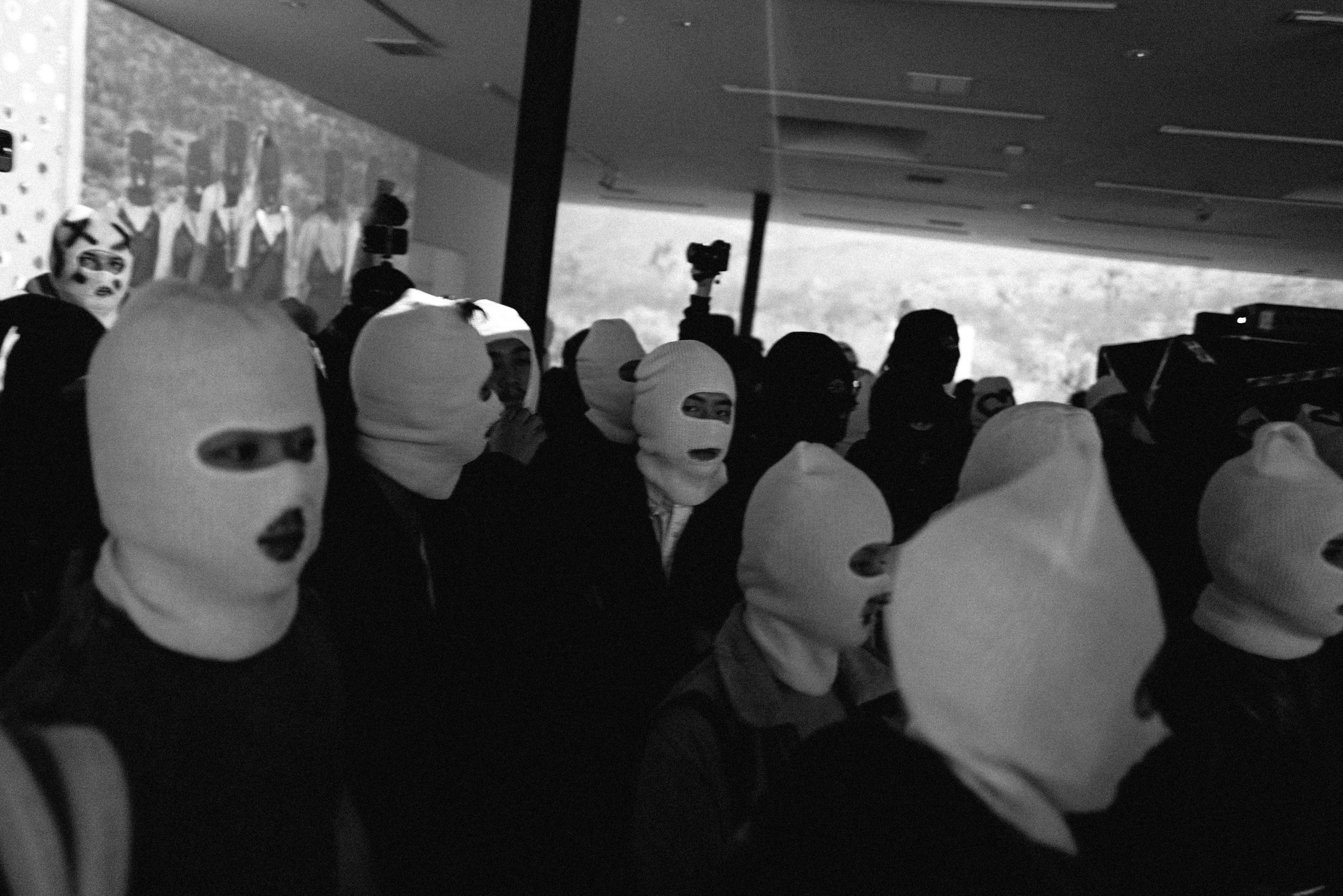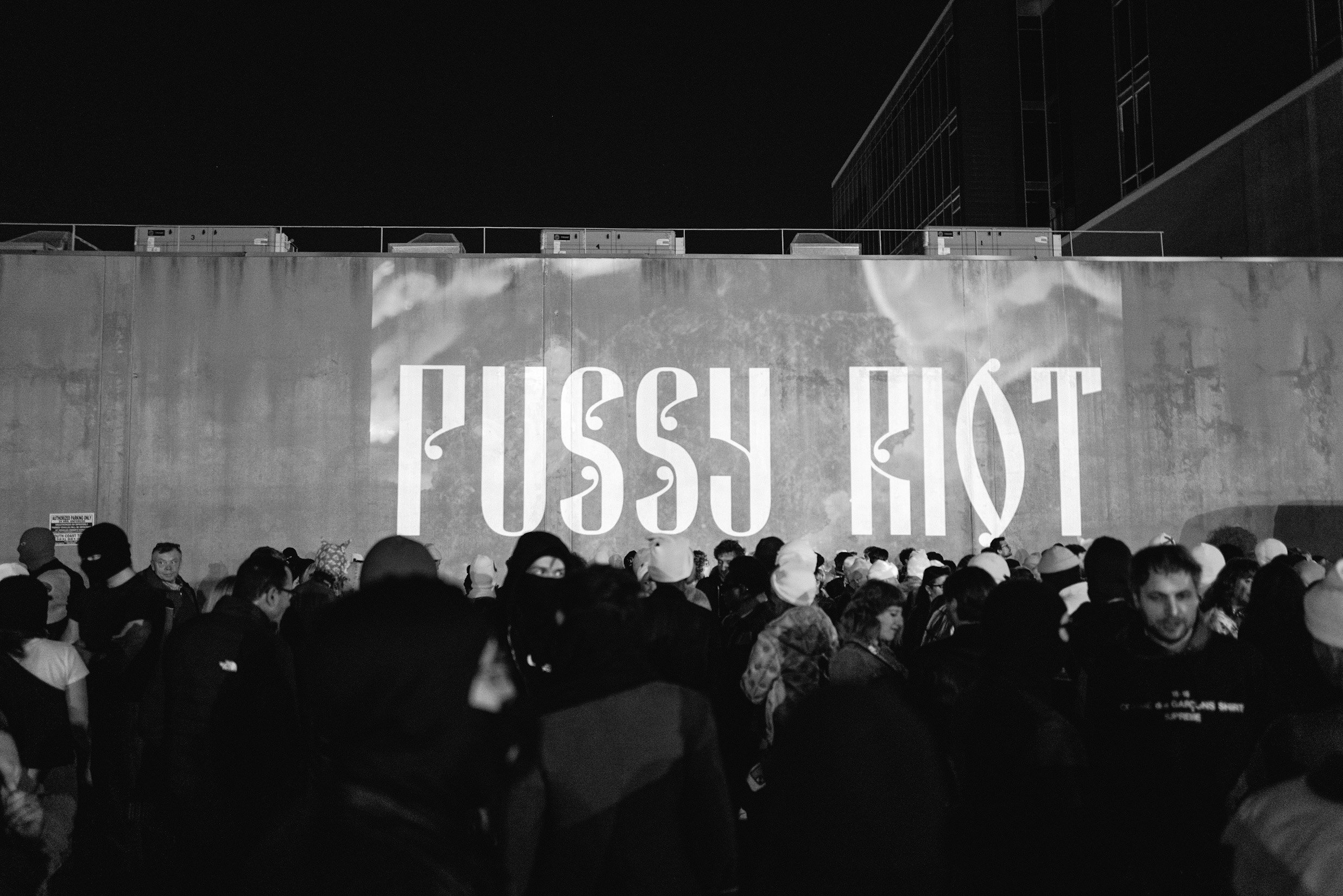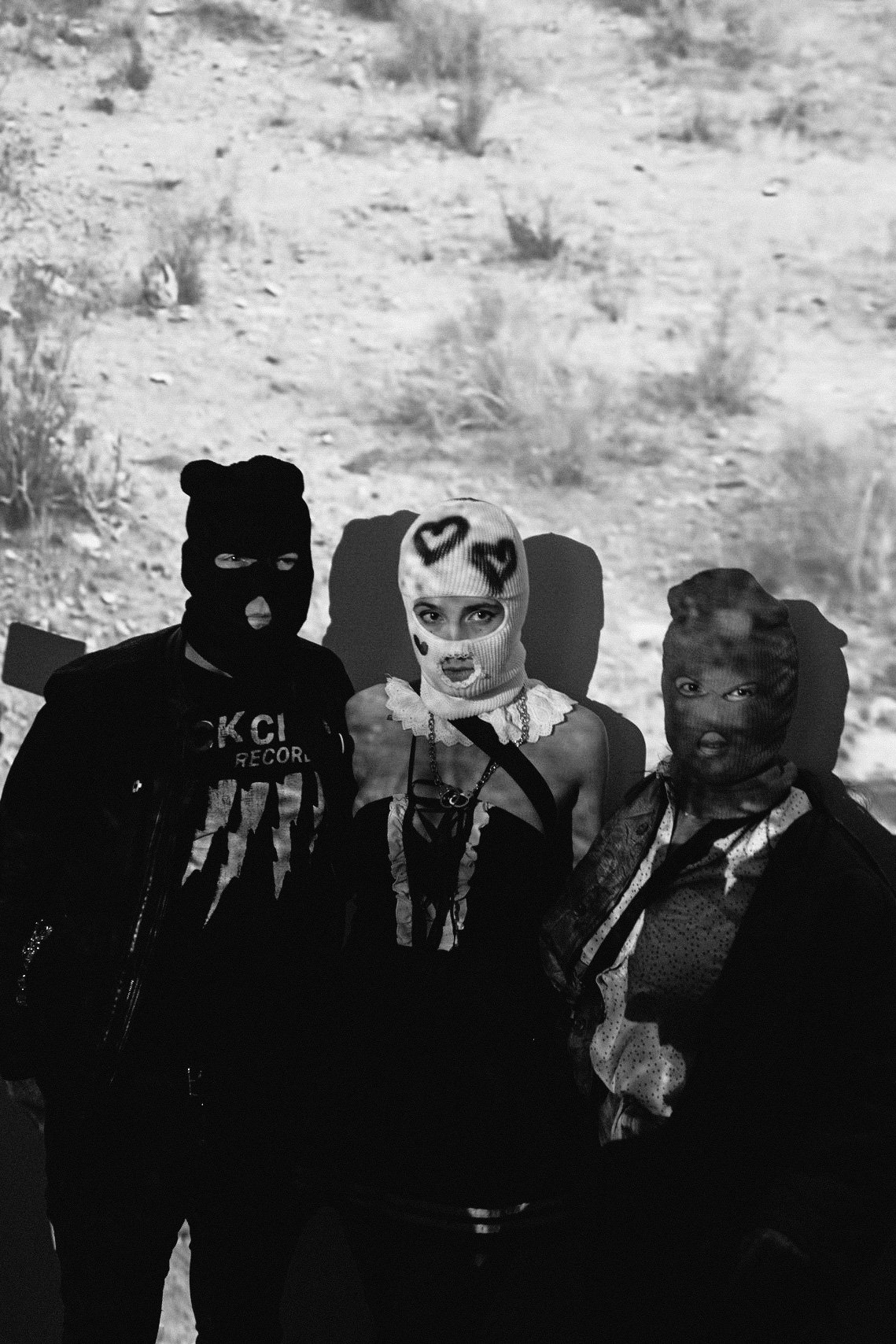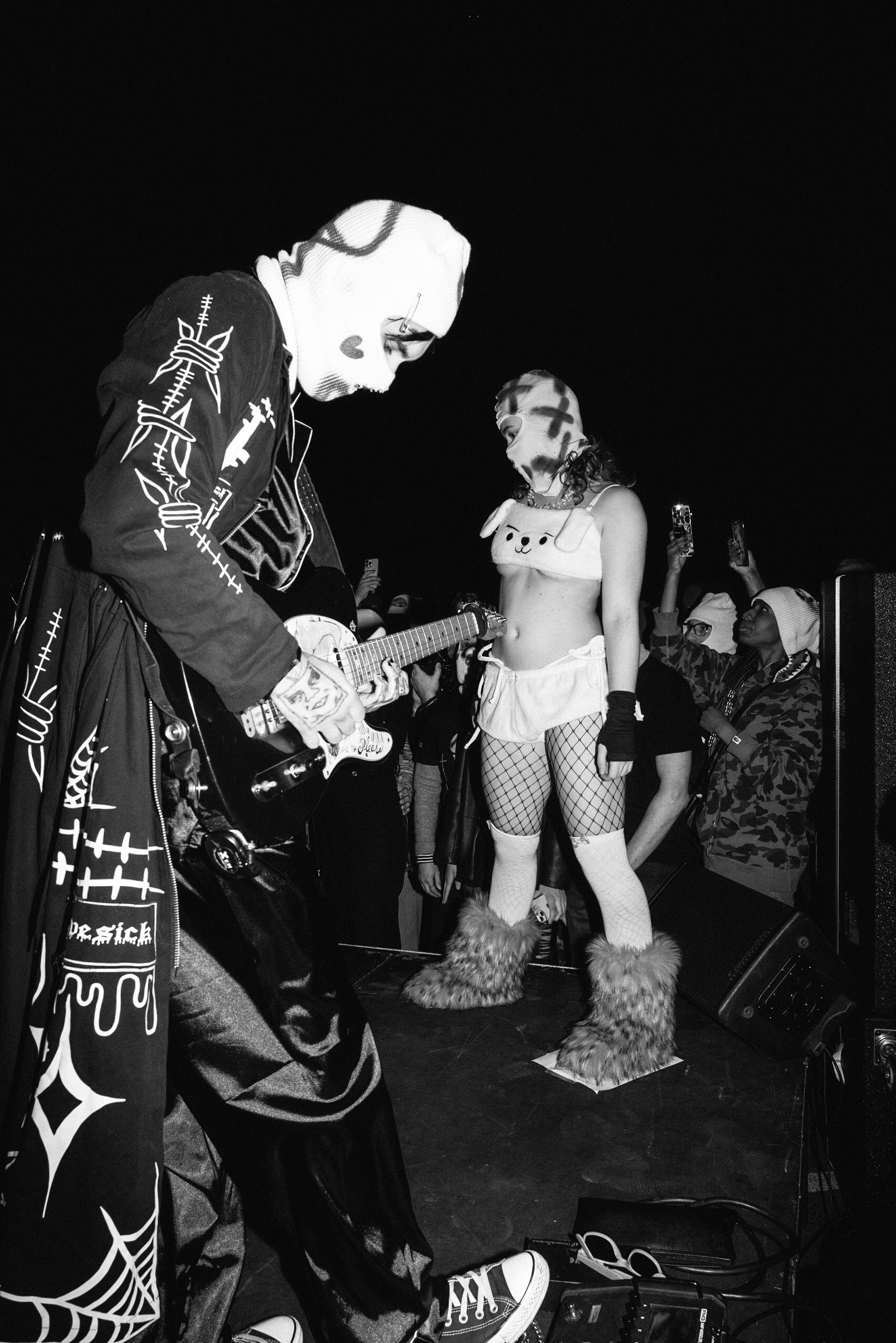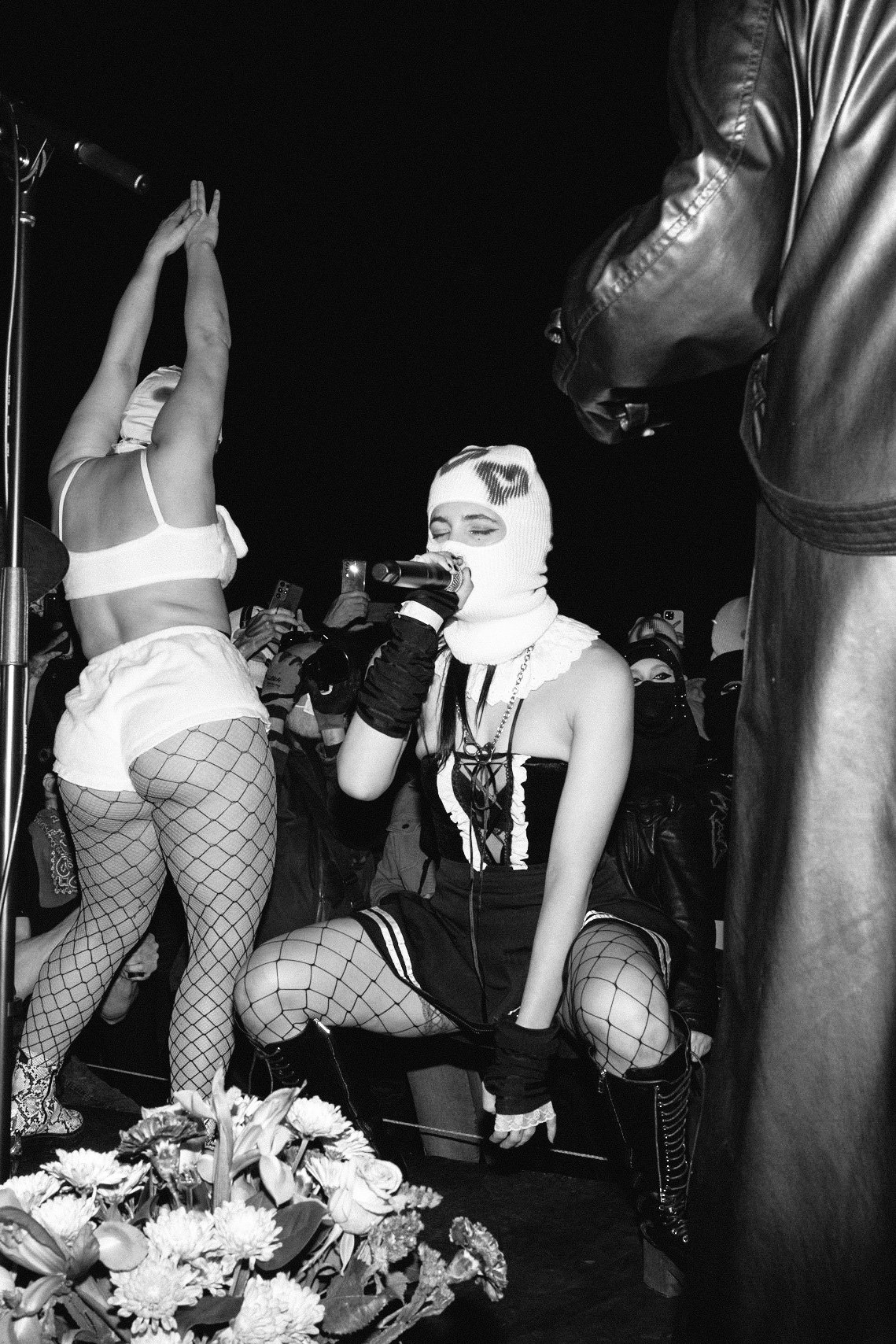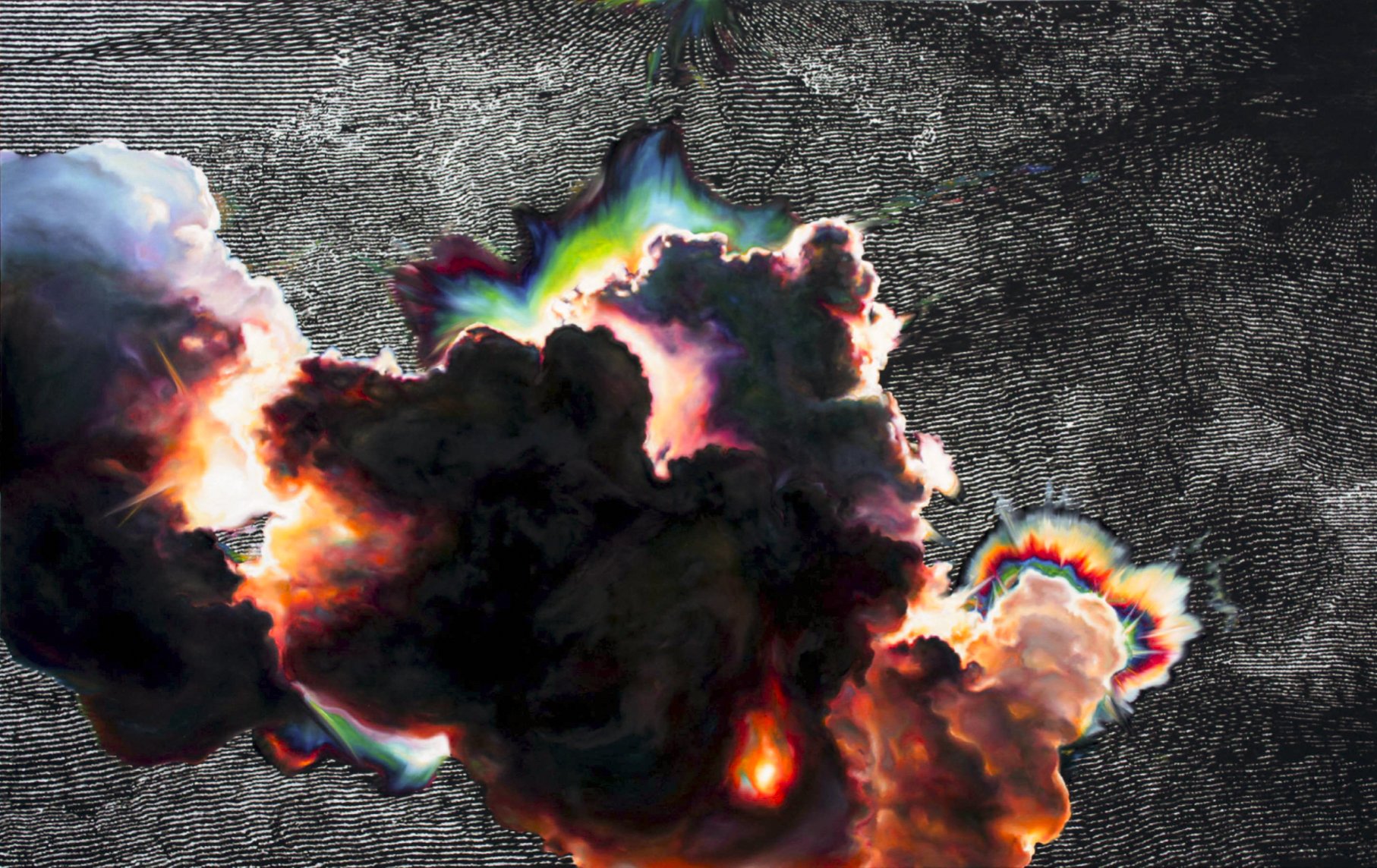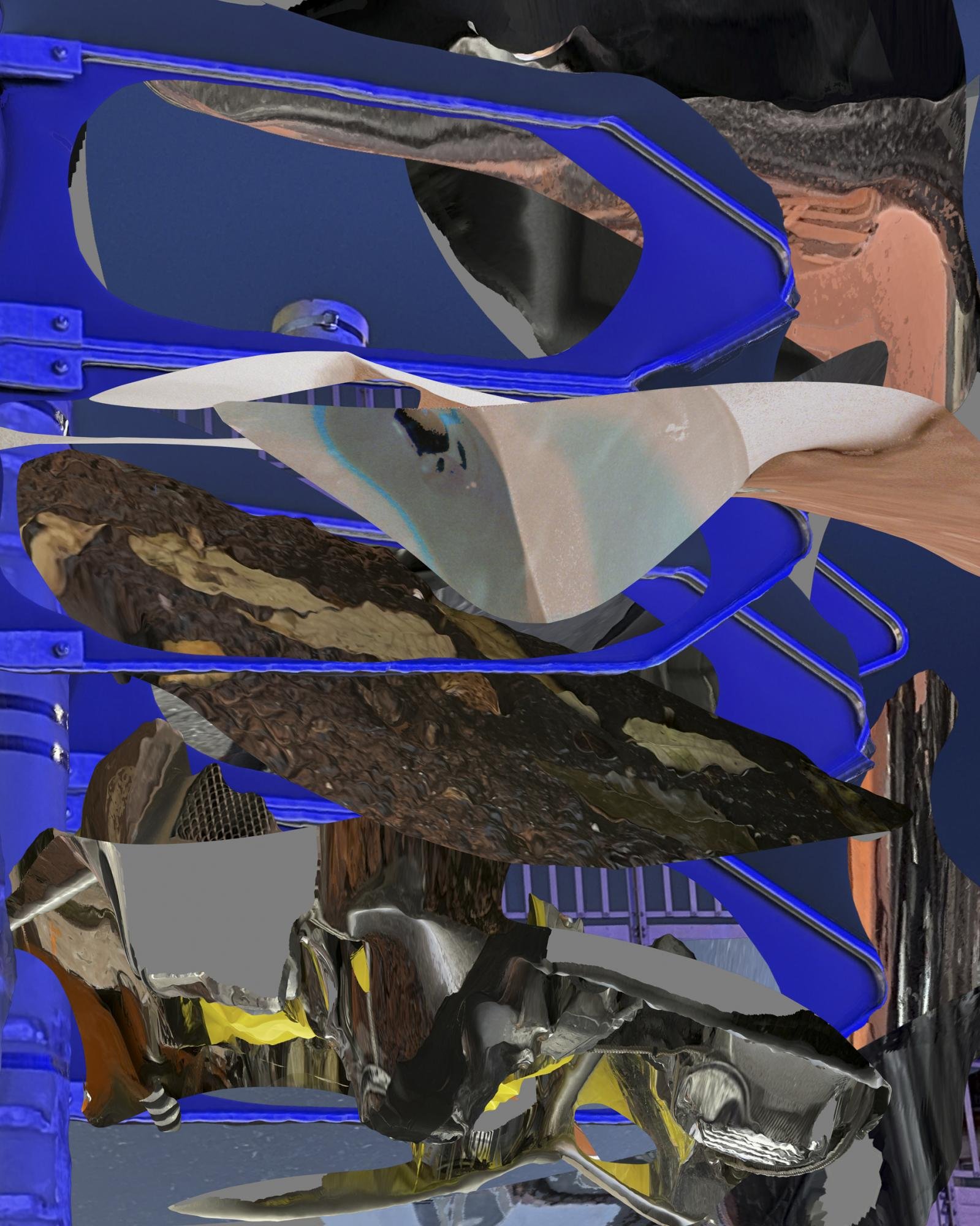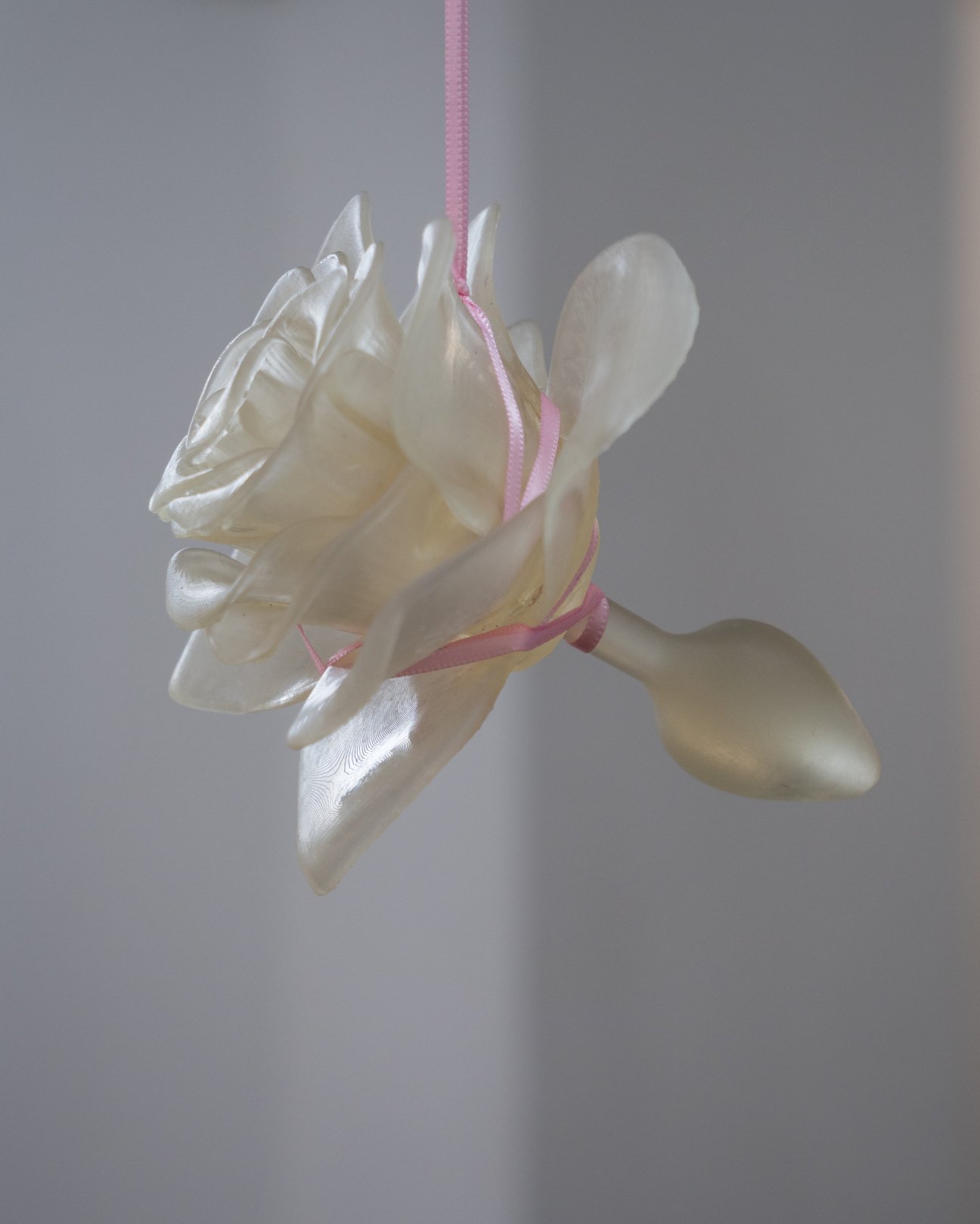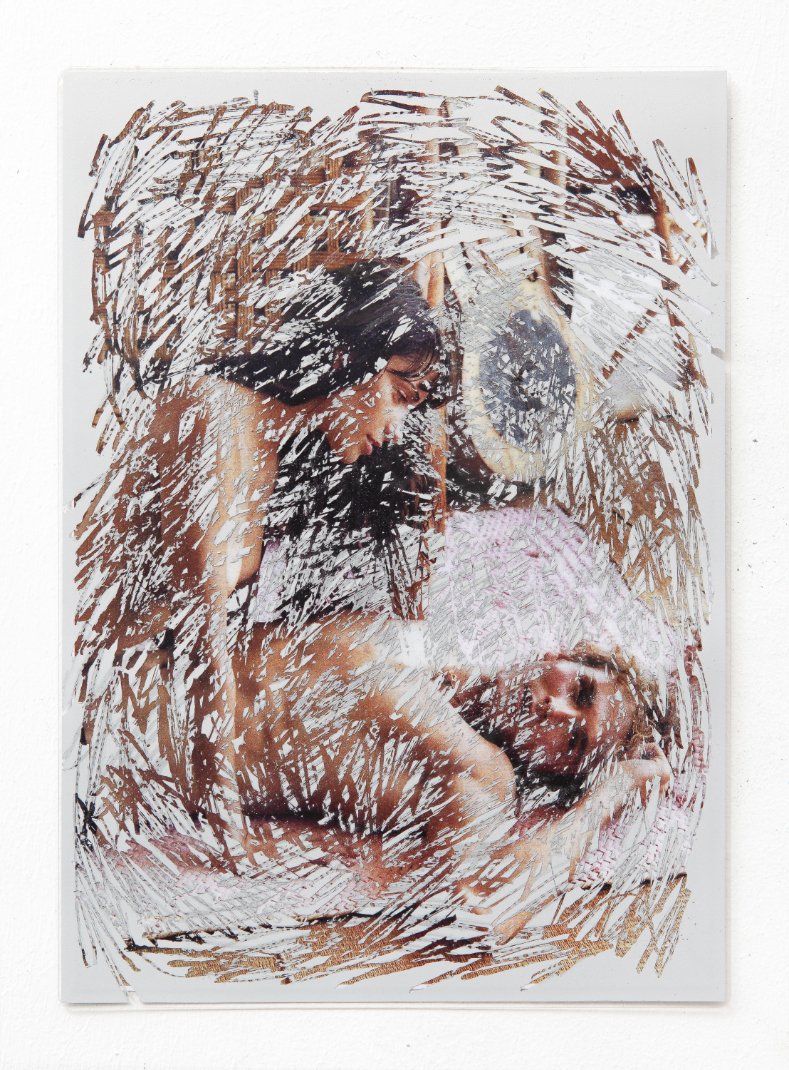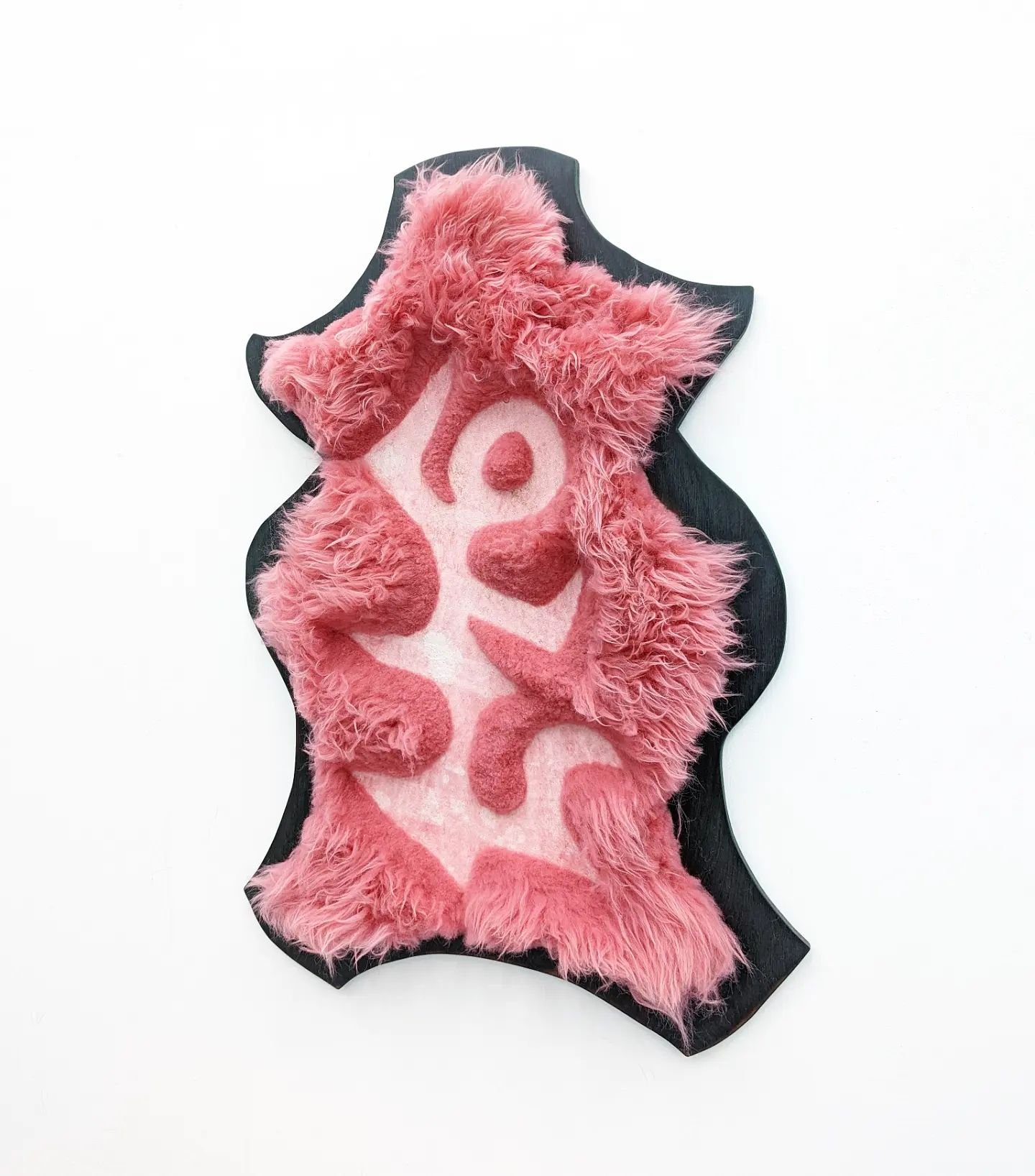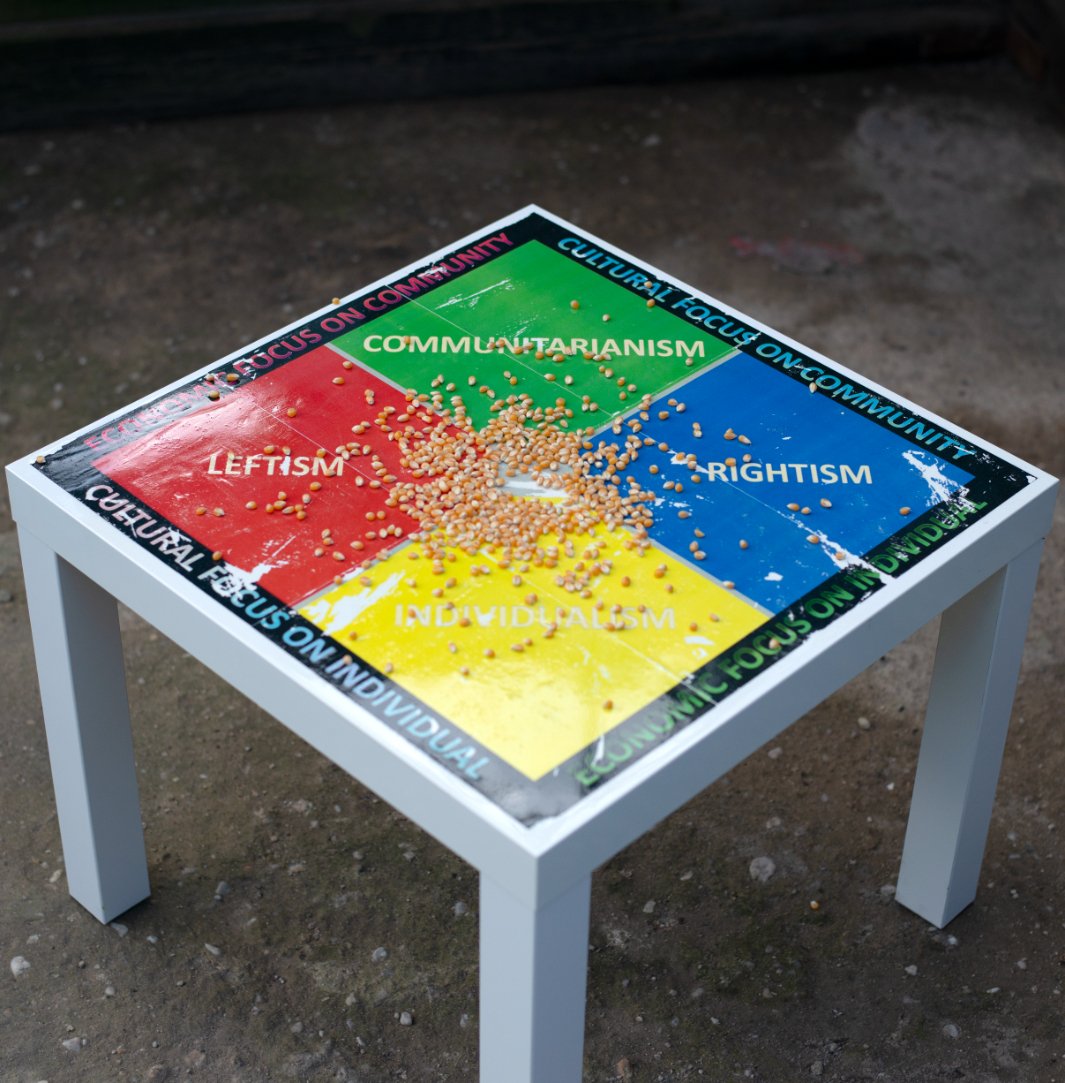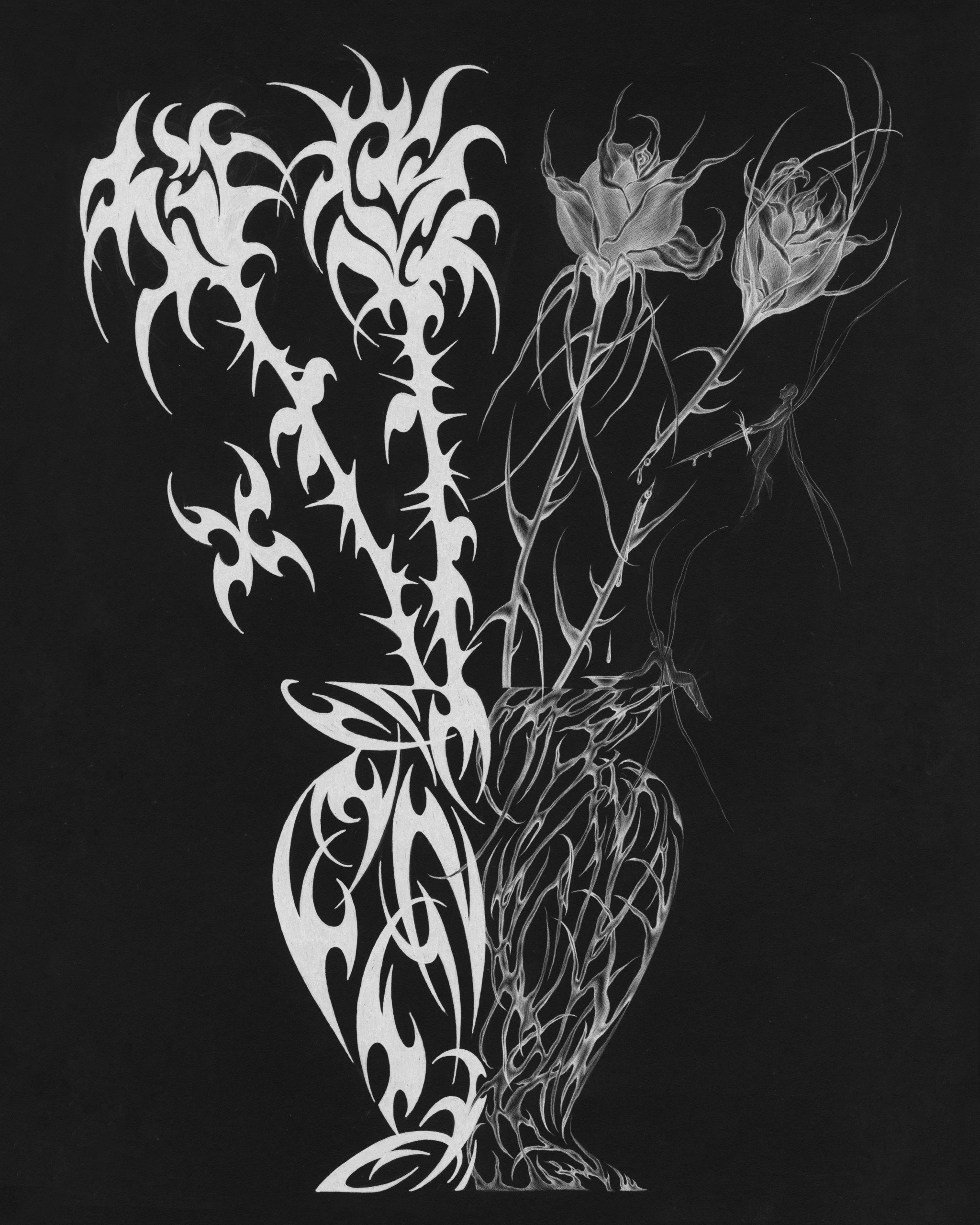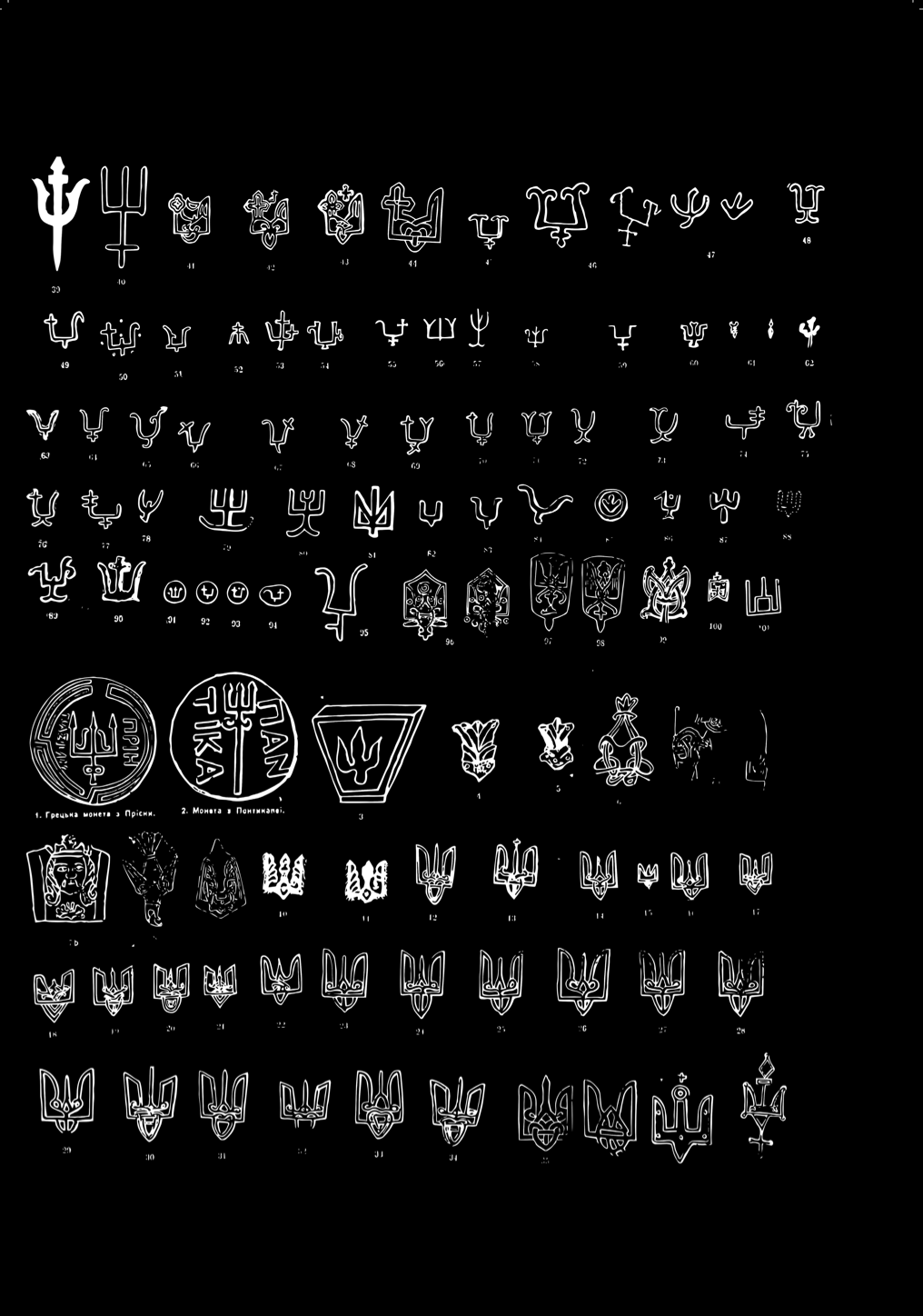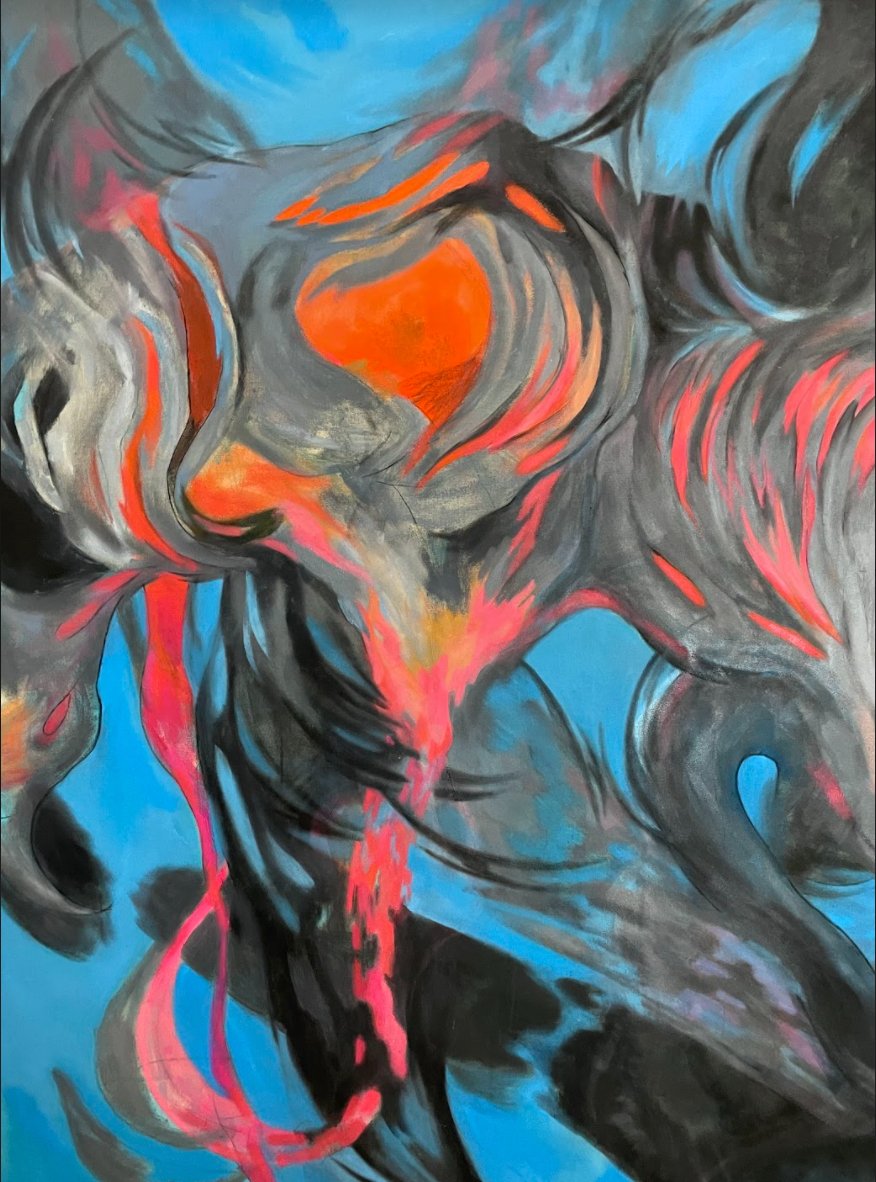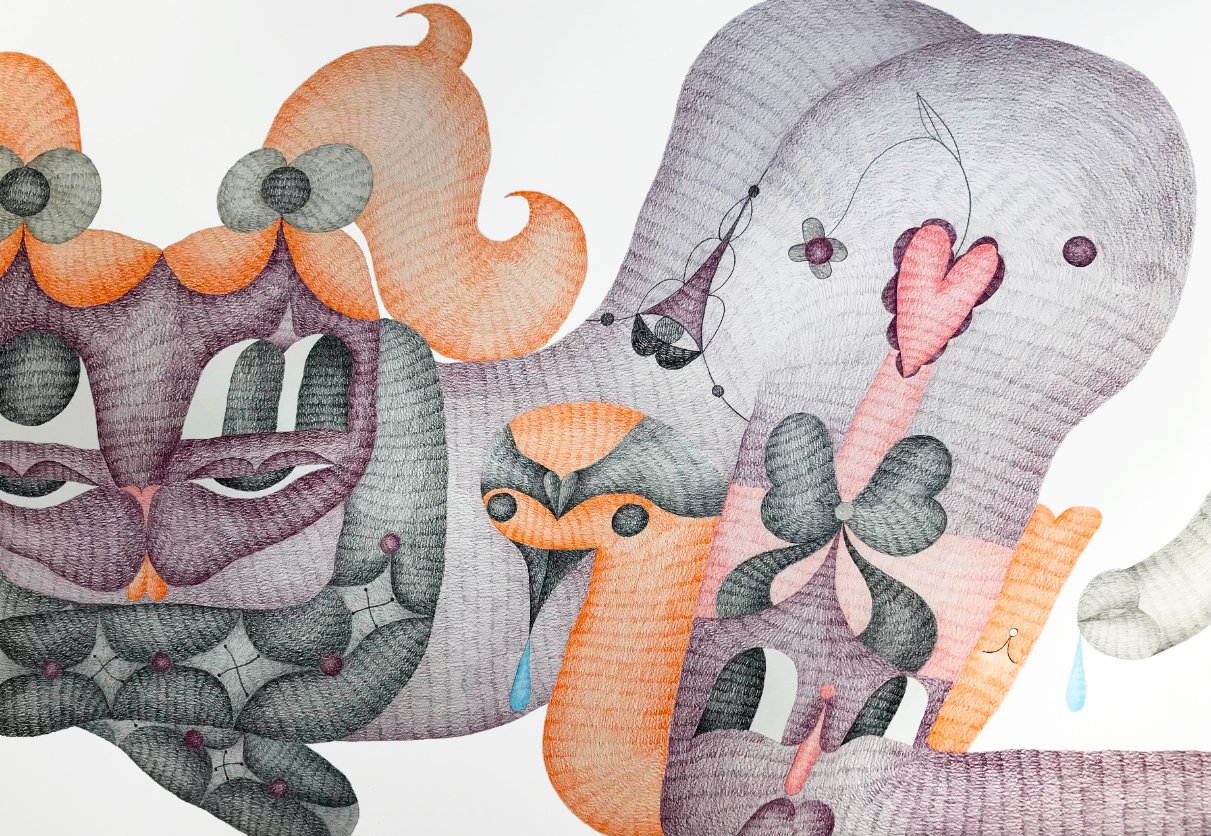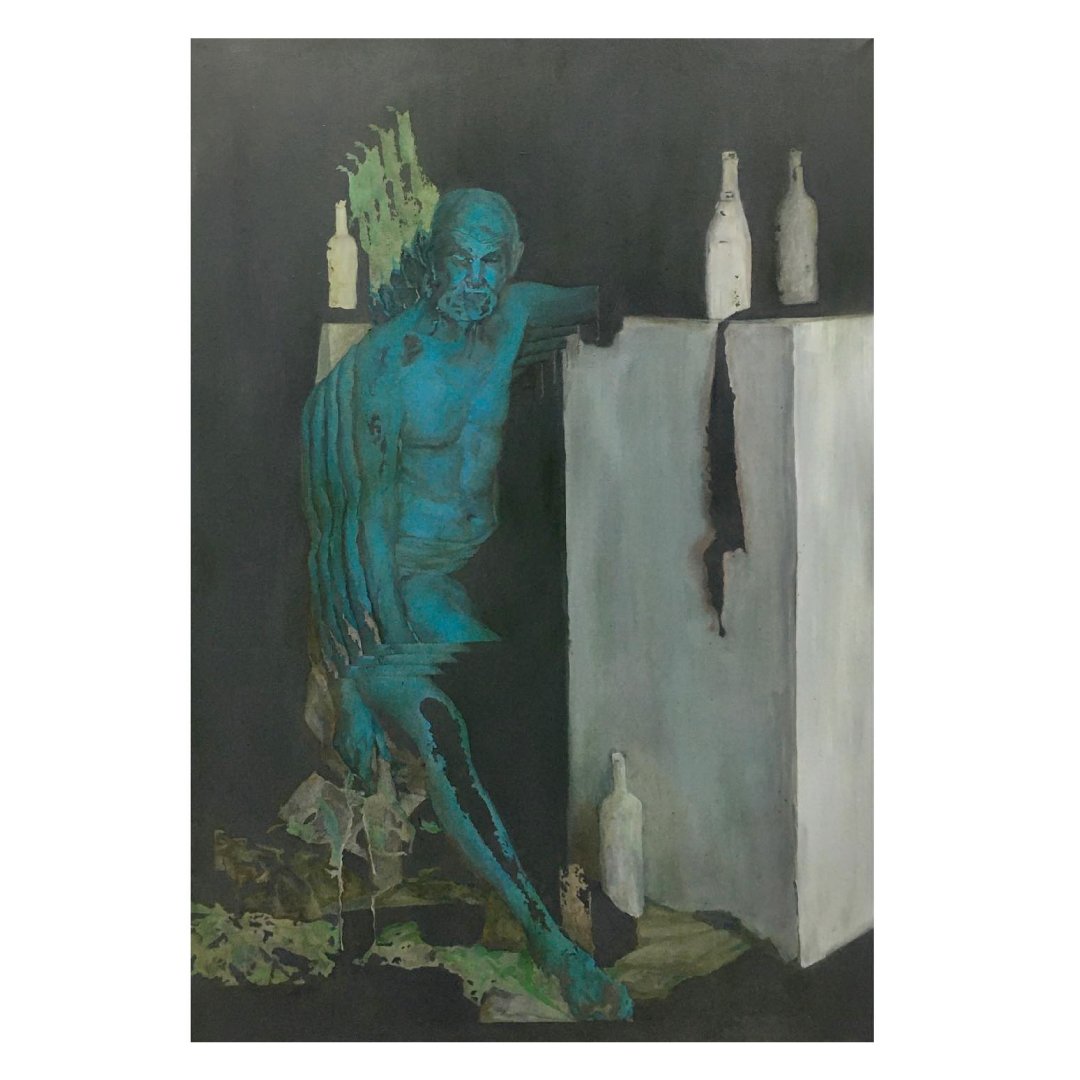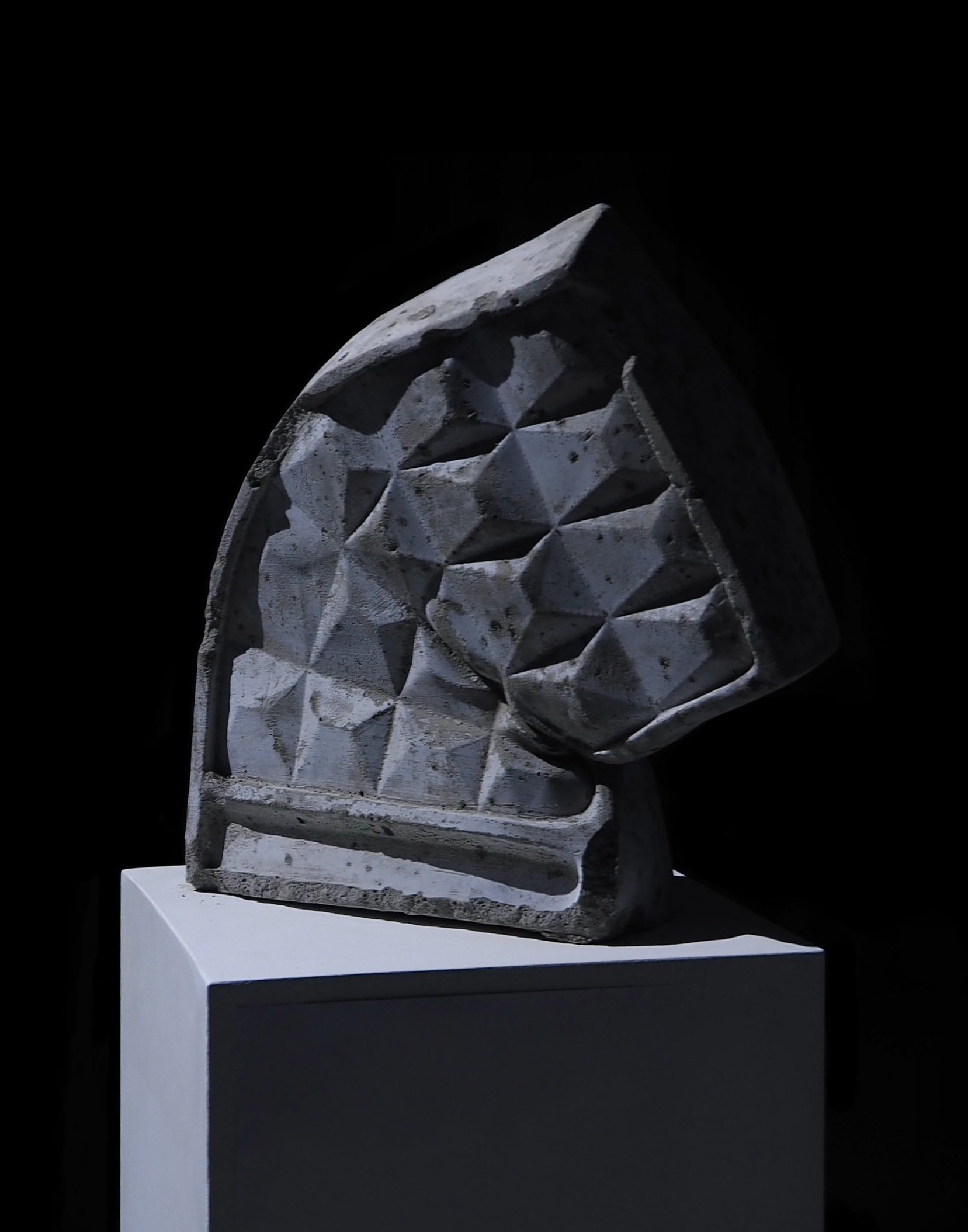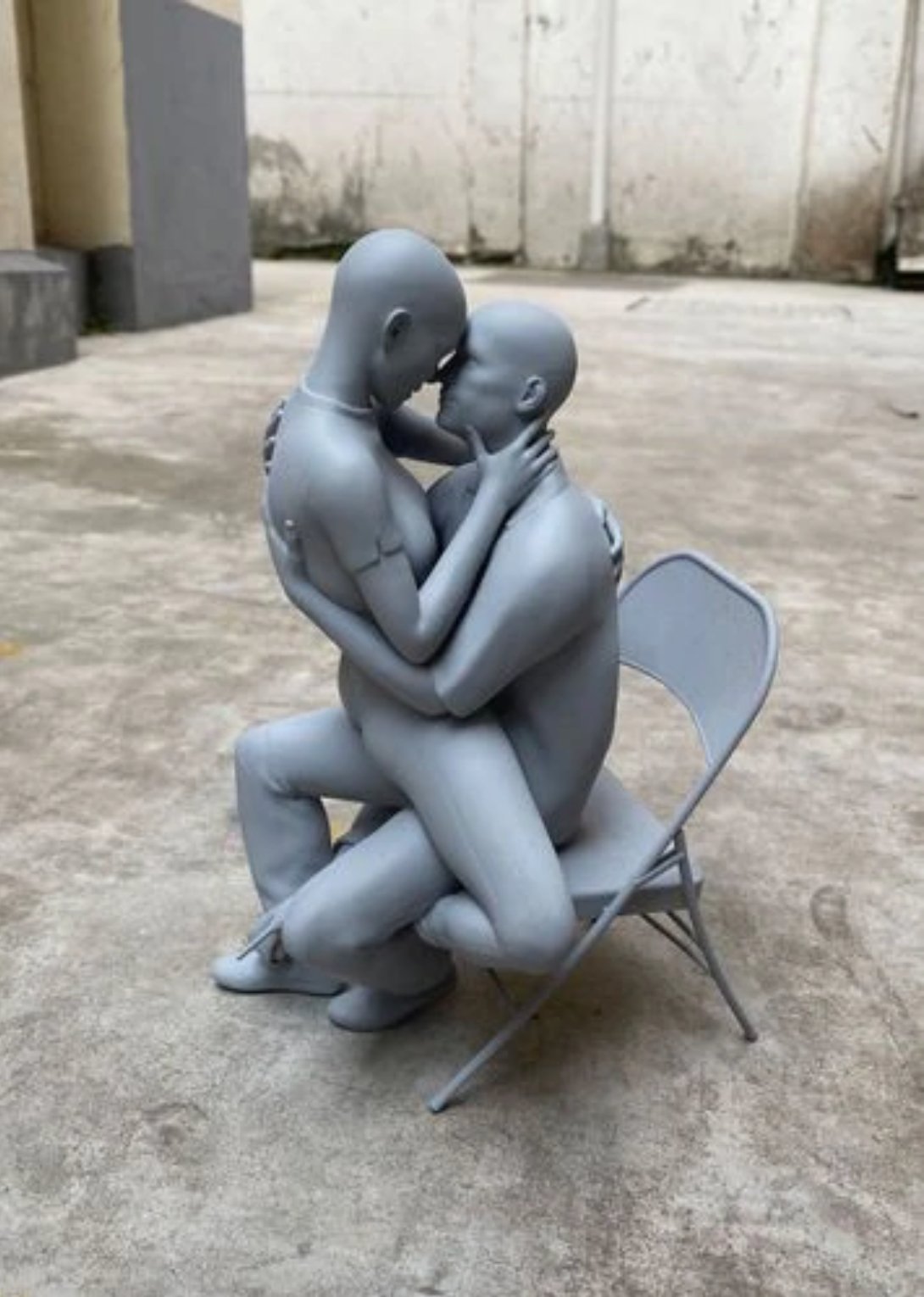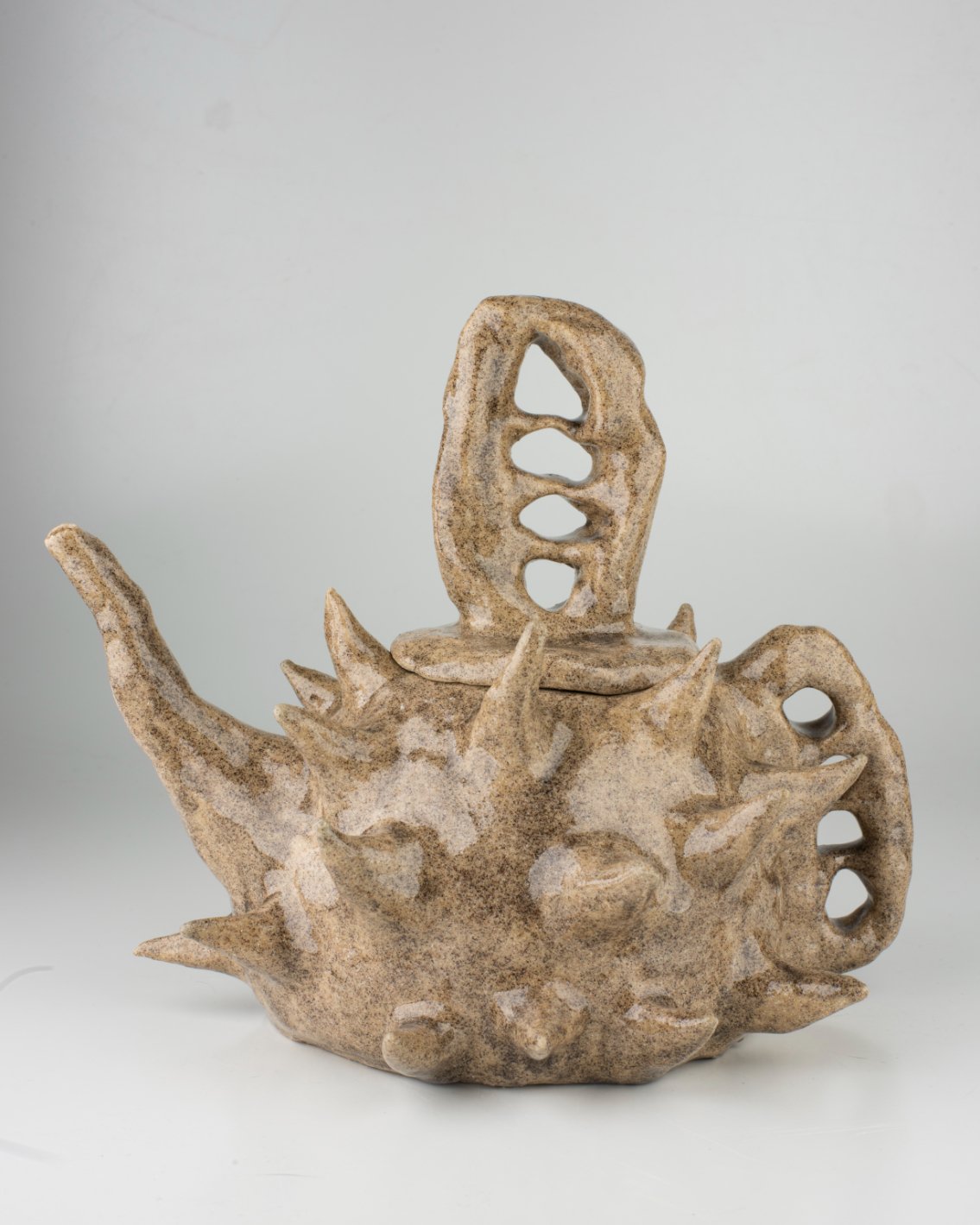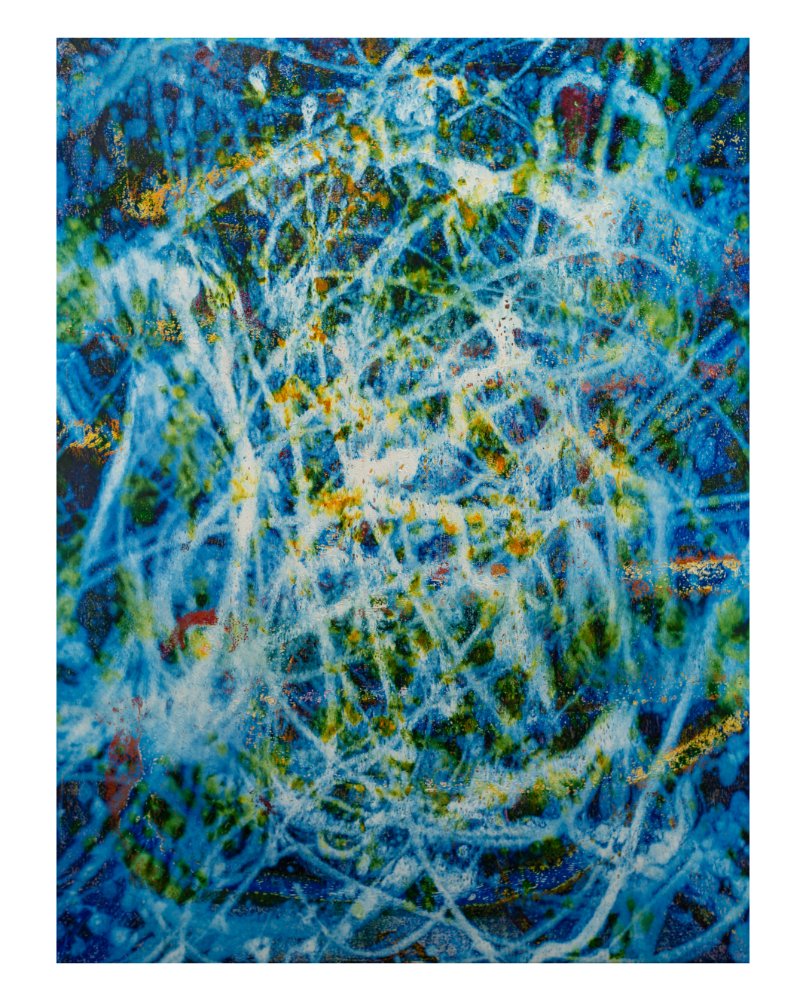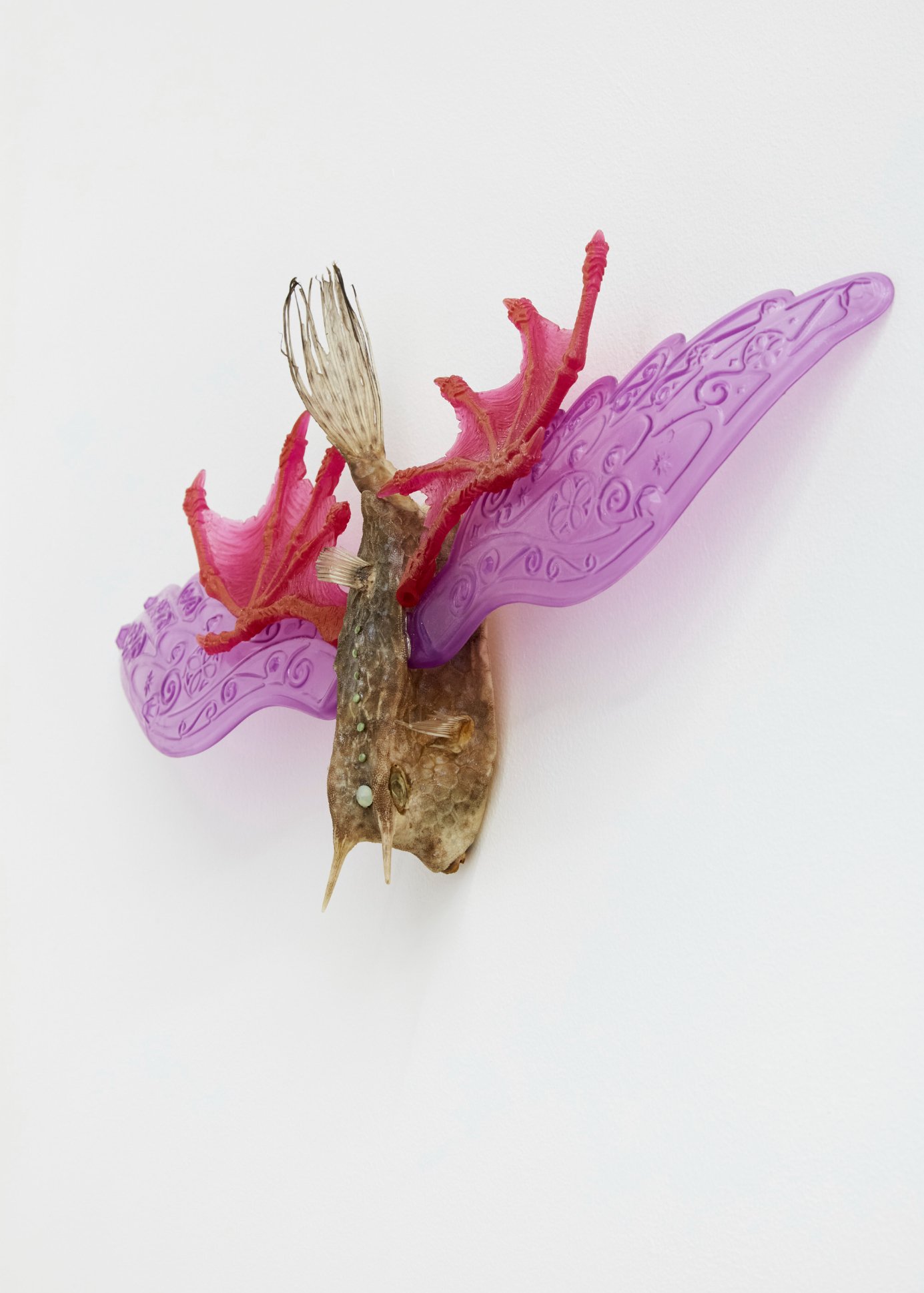photographs by Morgan Rindengan
On January 27, Pussy Riot brought its radical performance art to Jeffrey Deitch's Los Angeles gallery, inviting everyone to join their protest against the authoritarian leader of Russia who started the biggest war in Europe since World War II. This was the first presentation of Pussy Riot’s political performance art at a gallery in Los Angeles.
Putin's Ashes was initiated in August 2022 when Pussy Riot burned a 10 x 10 foot portrait of the Russian president, performed rituals, and cast spells aimed to chase Putin away. Twelve women participated in the performance. In order to join, women were required to experience acute hatred and resentment toward the Russian president. Most of the participants were either Ukrainian, Belarusian or Russian.
Pussy Riot's founding member Nadya Tolokonnikova bottled the ashes of the burnt portrait and incorporated them into her objects that were being presented alongside her short art film, Putin's Ashes, directed, edited, and scored by Tolokonnikova.
"While working with artifacts, bottling ashes and manufacturing the faux furry frames for the bottles, I used skills that I learned in the sweatshops of my penal colony. I was forced to sew police and army uniforms in a Russian jail. I turned what I learned in my labor camp against those who locked me up. Putin is a danger to the whole world and he has to be stopped immediately," says Tolokonnikova.
In 2012, Tolokonnikova was sentenced to two years imprisonment following an anti-Putin performance. She went through a hunger strike protesting savage prison conditions and ended up being sent far away to a Siberian penal colony, where she managed to maintain her artistic activity and with her prison punk band made toured around Siberian labor camps. Tolokonnikova published a book Read and riot: Pussy Riot's guide to activism in 2018.
Pussy Riot stands for gender fluidity, inclusivity, matriarchy, love, laughter, decentralization, anarchy and anti-authoritarianism.

